This article is about Drive Test Analysis and Postprocessing and focusing to the telecom RF engineers, technicians and supervisors. You will find lot of documents related to this article. Just navigate our website www.paktechpoint.com and find more articles.
Analyzing Drive Test Quality Based.
The speech quality is degraded by high BER for the air interface. The BER and FER are dependent on a number of factors such as fading and interference. Therefore good frequency planning is needed to avoid co–channel interference, adjacent–channel interference and other types of radio interference.
a) Bad Quality due to low Signal Strength.
As the signal strength weakens, the quality of the call degrades due to interference, fading, etc. Consequently the system becomes weaker to handle the interference. System will face bad Rx Quality, drop calls and ping pong handovers in such environments.
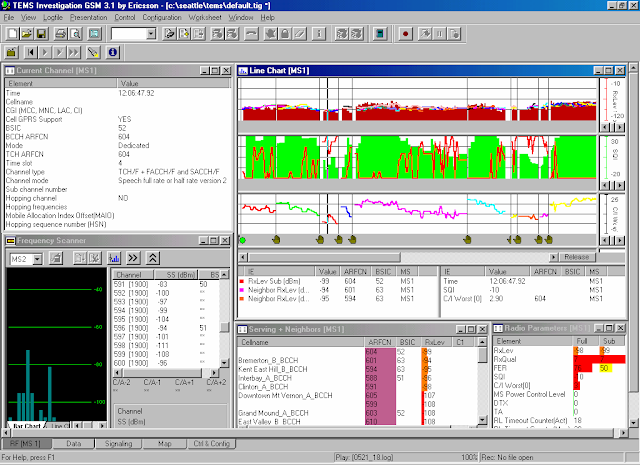
Bad Quality due to Low Signal Strength
b) Call Dragging:
Call may be dragged on a particular cell beyond its boundary. This might result in bad Rx quality or a dropped call.

MS is stuck on an overshooting cell which is far away. Check Time advance value in the Radio Parameters window.
c) No Dominant Server.
Signals of more than one cell can be reaching a spot with low or same signal level causing ping pong handovers. This results in poor voice quality as there is no dominant server at the spot to keep the call.

Drop Calls in GSM (2G).
If the radio link fails after the mobile sends the Service Connect Complete Message then it is considered a dropped call. Calls often drop when the signal it is using takes a sudden deep fade as it will have poor C /I and high forward FER. Besides this there are several other reasons due to which drop call occurs.

Radio Link Timeout Expiry due to HO Failure.
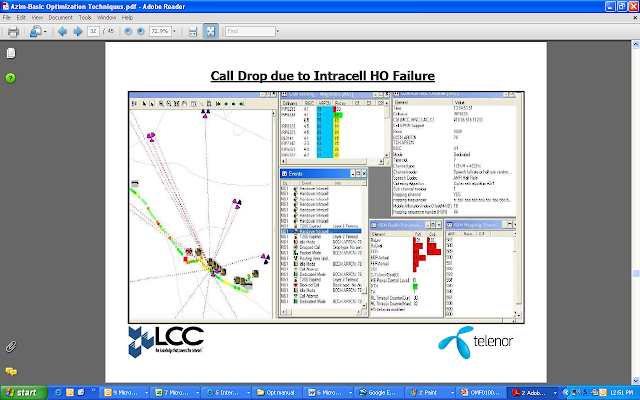
Call drop due to Intracell HO Failure.

Drop due to Non RF Reason (TXN or NSS end).
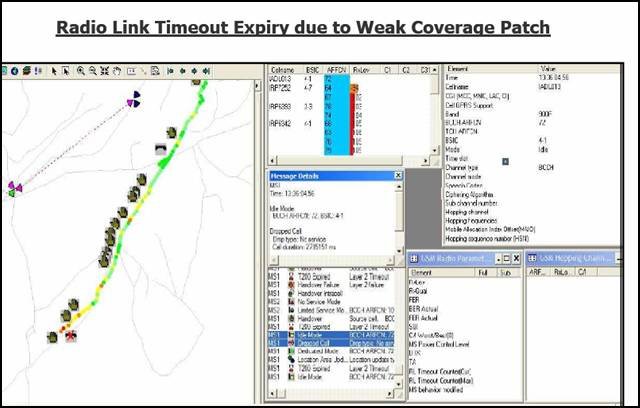
Radio Link Timeout due to Weak Coverage Patch.
While analyzing a drop call, layer 2 and layer 3 messages need to be check, as shown
below:
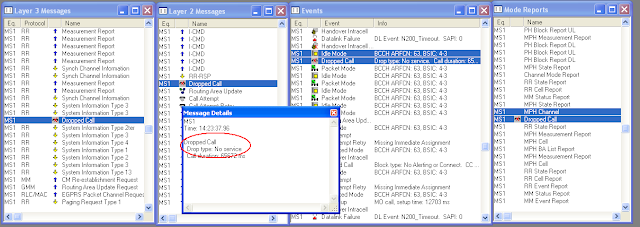
Layer 2 & 3 Messages in TEMS.
Handover Problems in GSM (2G).
If you observe a handover issue, then check that all the handover related parameters are correctly set so as to avoid illogical handovers. There will always be risk of a handover loop if handover parameters between two neighbors are not correctly set.
a) Late Handover.
There will be such cases where you will notice handover process taking place a little late. There could be couple of reasons to that. First thing to check will be if BCCH/BSIC of the target cell is being decoded. This can be checked in Measurement Report (MR) from Layer3 messages in TEMS. Also, use statistical data to check handover margins between the neighbors. If margins for level, quality or power budget handovers are not set correctly, handover will not take place at the right time. If margins are too much, handover will happen late, vice versa. This phenomenon also leads to ‘Call Dragging’.
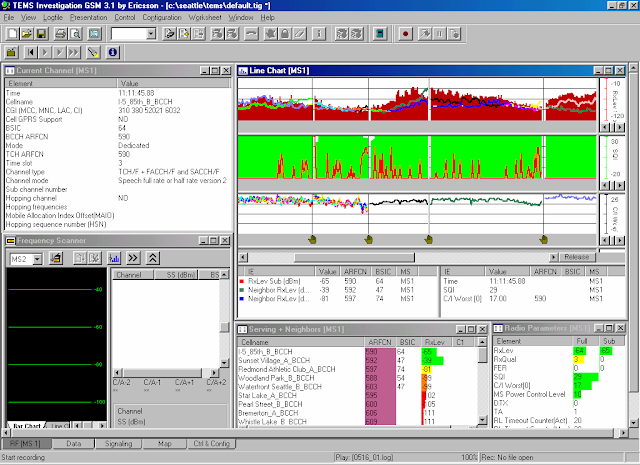
Late Handover:
Could be because of incorrect setting of handover margins or hierarchy between the cells or fast moving mobile.
b) Ping–Pong Handover.
A hysteresis is used to prevent the ping–pong effect i.e., several consecutive handovers between two cells. The ping–pong effect can be caused by fading, the MS moving in a zigzag pattern between the cells, reception of similar signal levels from various servers, or due to lack of dominant server .
Please read also: GSM KPIs Analyzing and Troubleshooting PART-1
If measurement analysis shows an inconsistency in the parameter setting; hysteresis and offset parameters can be tuned to reduce ping-pong effect.
Incorrect handover margins will cause ping–pong handovers. These margins need to be adjusted in a way that handover happens at appropriate time

Ping–Pong Handover due to Lack of Dominant Server.
c) Unnecessary Handover.
Just like ping–pong handover effect, incorrect margins can cause unnecessary handovers that will directly affect network performance. The more number of handovers, higher the risk of facing quality problems or even drop calls. These illogical handovers are majorly contributed by overshooting cells.
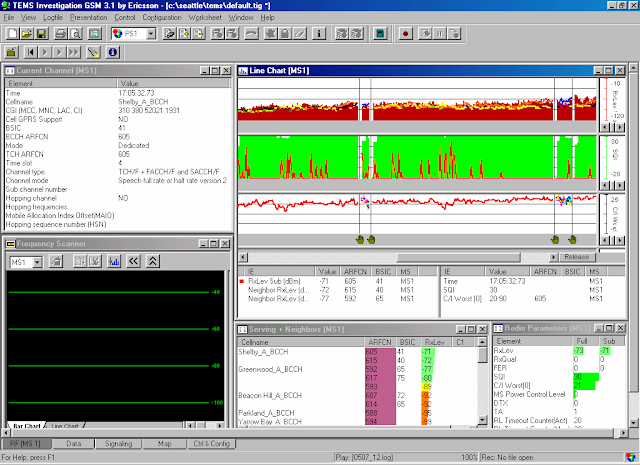
Unnecessary Handover – Adjust Power Budget Handover
d) Missing Neighbor Relation.
If the best adjacent cell is not appearing in the neighbor list, there is a possibility of missing neighbor relation. The call will be handed over to the best neighbor being reported.
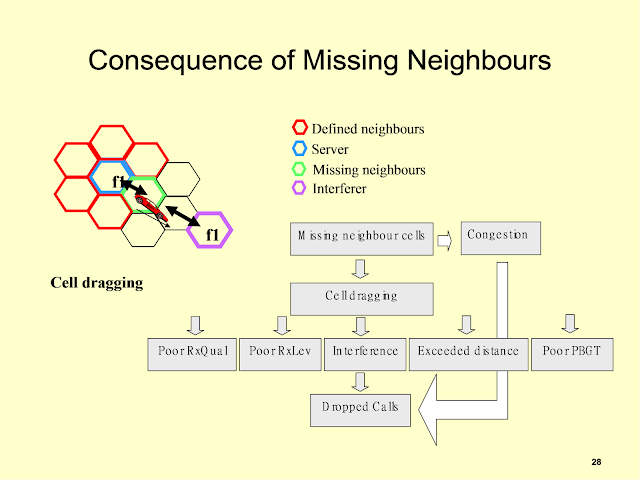
Consequence of missing Neighbors in above figure.
e) Fake Neighbor.
Sometimes you will see a good handover candidate in the neighbor list but handover attempt will fail, and call will drop. Although that neighboring cell with a very good signal level appears to be a neighbor, in reality it is not. Just because the serving cell has another neighbor with the same BCCH; this cell appears in the list. Make sure that no two neighbors are defined with same BCCH for a source cell.
f) BCCH Missing from Serving Cells MBCCH list.
There will be cases you will notice handover is not taking place although two cells are defined as neighbors to each other. If neighbors BCCHNO is missing from serving cell’s MBCCHNO list, MS will not monitor or report the neighbor’s BCCH frequency. This will prevent HO attempt to the neighbor.
g) NCC Missing from Serving Cells NCCPERM List.
If neighbor’s NCC (Network Color Code) is missing from serving cell’s NCCPERM list, then MS will not be allowed to include the neighbor in the measurement report, because its NCC is not permitted. This will prevent HO attempt.
h) The Same BCCH&BSIC Combination.
During calls the MS reports the BCCH, BSIC and Signal strength of the six strongest neighbors to the BSC. BSC has to map the neighbors’ BCCHNO&BSIC combination to neighbors’ CGI (Cell Global Identity). Therefore all neighbors of same cell should have a unique BCCHNO&BSIC combination.